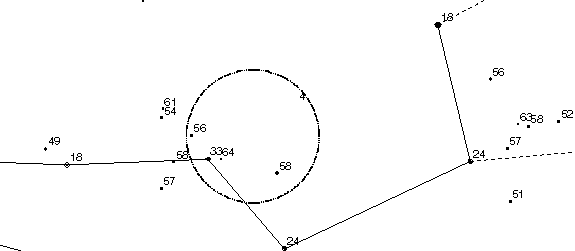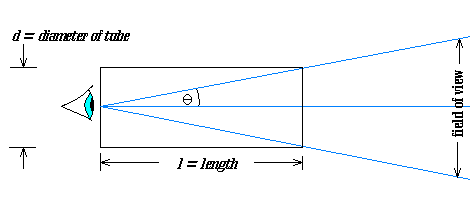Instructions for Star Count Observation
GOAL: Estimate the number of stars visible in the sky.
The idea is to count all the stars that are visible in a small but
known angular field of view (in this case, a tube from a toilet
paper roll) and then extrapolate this number to cover the whole
sky.
The idea is analogous to counting all the sheep in 1 square mile of
New Zealand countryside: multiply by the number of
square miles in New Zealand to estimate the number of sheep in
New Zealand.
Find a site that is as dark as possible - a really light-polluted sky
is no fun.
STEP ONE: Estimate Limiting Magnitude
There are many many faint stars but only a few bright stars. For our
numbers to make sense, we have to be counting the number of
stars brighter than some limit . We will use the Big
Dipper as our yardstick.
Compare the two pictures below. The second is a zoomed version of the
first. (The first image is courtesy of Chris Dolan's
constellation page. ) As you may recall, the magnitude
scale starts with the brightest stars as magnitude 1 and
the faintest stars visible as magnitude 6. Some magnitudes are
marked next to big dipper stars.

Next to each of the stars below is a two-digit number. These are
star magnitudes less the decimal point, so that "24"
really means "magnitude 2.4" and so on. Looking carefully
through your tube, can you see any of the fainter stars?
By looking at the magnitude numbers, try to estimate the
magnitude of the faintest star that you can see. For
instance, if you can see "Megrez" but not star 23, your
limiting magnitude is somewhere between 3.3 and 3.7.

STEP TWO: Count Stars
Before you begin counting, consider the following: (1) At low
altitude (the number of arc-degrees you are looking above the
horizon; 0 is on the horizon, 90 is straight up) there is often a lot
of haze. So don't count stars at lower than, say, 35 degrees altitude.
(2) You will want to take multiple counts and average them together, so
make a data grid with (for instance) altitudes of 45, 60, and 75
degrees for rows, and N, S, E, and W directions for columns. (3) Most
people find it impossible to hold the tube perfectly steady. You might
find it useful to tape the tube to a long stick or other convenient
object. If there are only one or two stars in the field of view this
is less important.
STEP THREE: Geometrical Correction
After you have an average number of visible stars as seen through your
tube, you will need to multiply by a substantial correction factor to
estimate the number of stars in the whole sky. The geometry is like this:


Variations on the theme:
- You might want to try this with
binoculars. You need to know the field of view of the binoculars (this
is often written on the binoculars themselves). Estimating the
limiting magnitude may be difficult because you
may see stars significantly fainter than the ones on the maps I have provided.
- You may want to try this (a) with the moon less than 50%
illuminated, and (b) with the moon nearly full, and contrast the two
results.
- You also may want to try (a) in, and (b) out of the city,
to gauge the effects of sky darkness.
Astronomy Class



